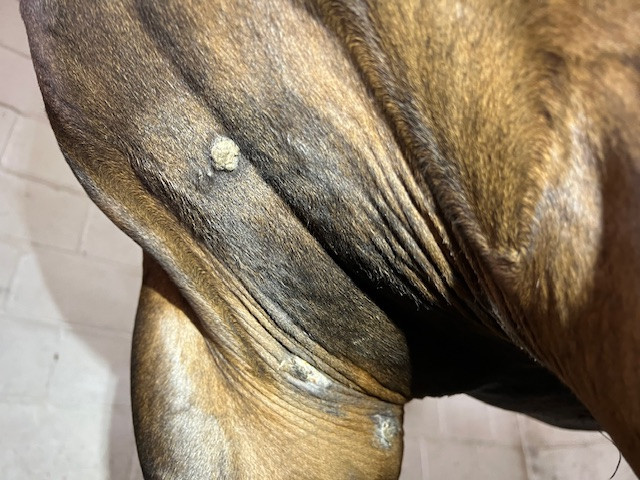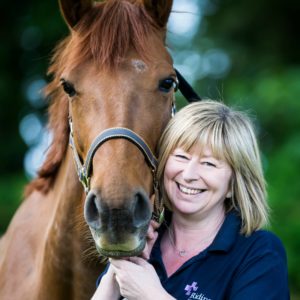Sarcoids are types of tumour which occur in the skin. They are the most common type of equine skin tumour and have a wide range of appearances.
Common places which we see sarcoids include between the back and front legs, around the sheath, eyes or ears or on the chest or abdomen. They are common in younger to middle aged horses but can present at any age, a genetic predisposition has been noted so there may be horses that are more prone to getting them.
Sarcoids originate from fibroblast cells which can be locally invasive, meaning the sarcoid tissue may be present within a margin of skin around the lesion which we can't see.
Types of sarcoid:
- Occult or flat lesions. A flat patch of greyish skin, often scaley which can be confused with ringworm
- Verrucus or wart lesions. These often look like small warts and often multiple are bunched together
- Nodular. Clearly demarkated lumps which can appear shiny on the surface with hair loss and can become quite large
- Fibroblastic. These are often at sites of previous wounds and can be ulcerated masses which hang down from the affected area. These sarcoids are known to be quite aggressive and grow rapidly
- Mixed. More than one of the sarcoid types often close together forming a colony
- Malevolent. These are the most aggressive type and track along vessels and under the skin. Nodular lesions can form and create areas of ulcerative sarcoids. These can become very difficult to treat.



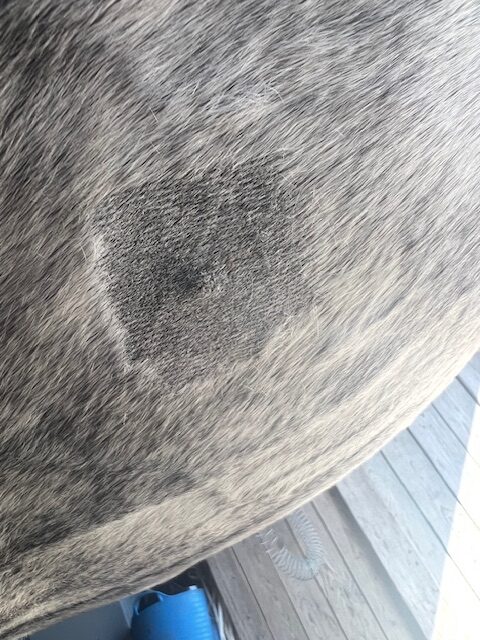

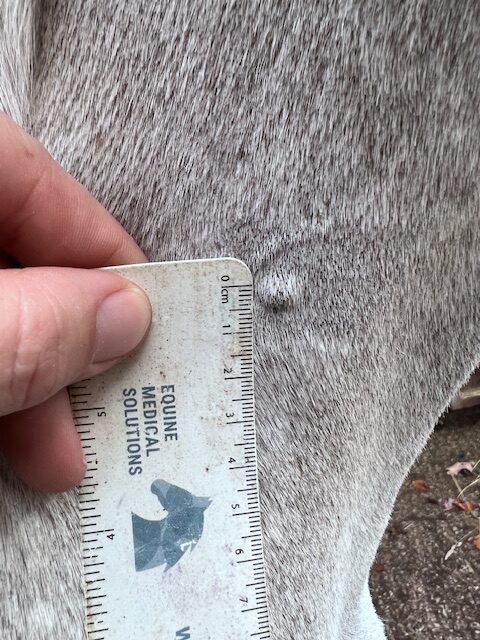
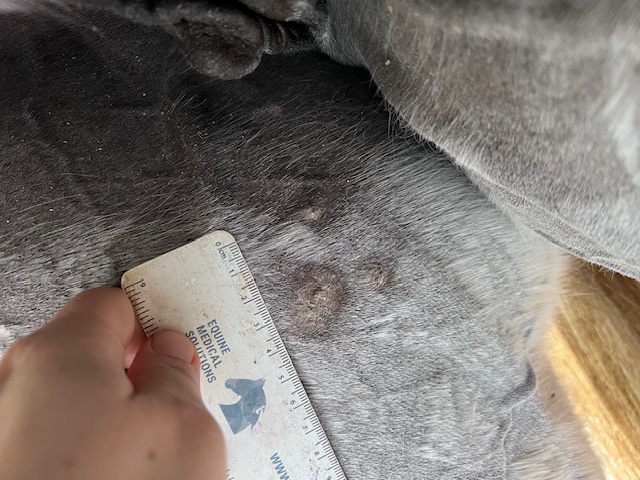
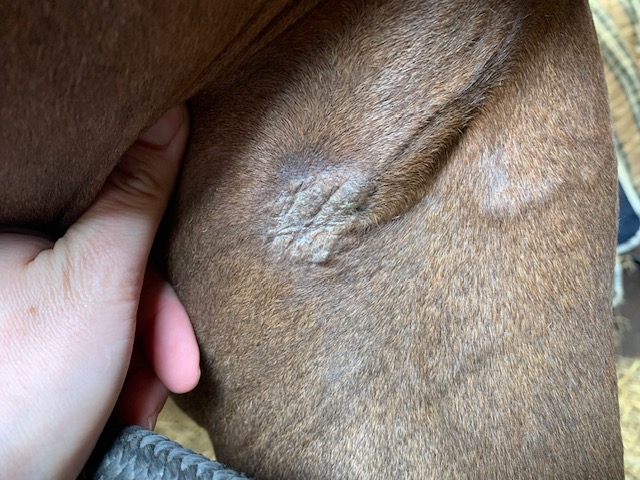
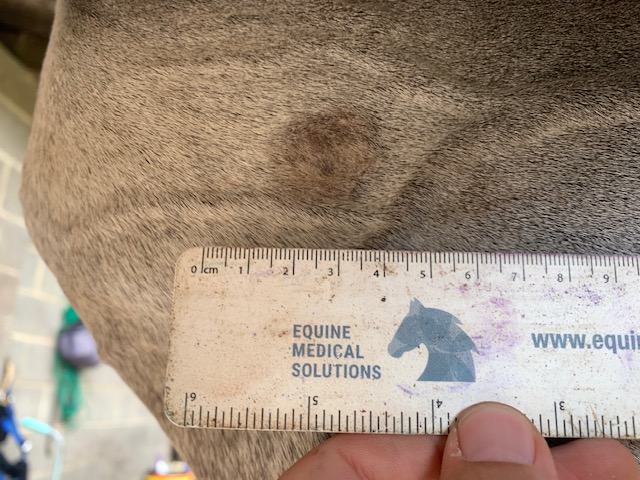
So how do we treat them?
- Depending on the type of sarcoid our treatment options can vary!
- Topical cream- commonly Chemotherapy cream- this is produced by Equine Medical Solutions and consists of varying strengths and the frequency of application varies depending on the lesion. Other creams can be used for areas surround eyes
- Laser surgery- this allows for a margin of skin to be removed around the sarcoid to reduce risk of recurrence. For this procedure it is performed in our clinic under standing sedation and local anaesthetic
- Surgical removal- surgical removal has a higher risk of recurrance and requires wide margins to be taken
- Banding- this can be used for nodular lesions HOWEVER there is a risk of recurrance as often there are stalks present or cells deeper in the skin which won't be removed
- Immunotherapy- BCG injections into the tumour itself (commonly around the eye). However BCG can be difficult to source.
- Cryotherapy- this is time consuming and has a high rate of recurrence.
- Radiation therapy is possible
Unfortunately recurrance of sarcoids is common with whichever treatment you chose, however treating early lesions is better and addressing new lesions as they appear will improve the chances of complete resolution.
How do they spread?
- there is some indication that Bovine Papillomatous virus (BPV) has a role to play, and that insect vectors (flies) can transmit this between horses
How do I prevent my horse getting sarcoids?
- Unfortunately some horses are genetically predisposed meaning they will likely get them regardless
- However this is not all horses therefore it is sensible to cover any wounds and practice good fly control during the summer months
What should I do if I think my horse has a sarcoid?
- contact us on 07747 771182 and we can arrange to examine your horse
- 9/10 times if you find one there will be more! We will perform a thorough clinical exam and then advise you of how many lesions, what type of lesion and what your treatment options are to enable removal and resolution in a timely manner.
If you have any further questions or queries, please don't hesitate to contact us on 07747 771182, text/whatsapp, facebook messenger or via email at info@ridingsequinevets.co.uk
Wishing you all a lovely weekend on this sunny but chilly February! Alex x
